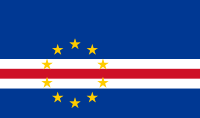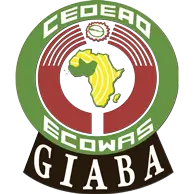The GIABA Plenary adopted the mutual evaluation report (MER) of the Republic of Cabo Verde in May 2019. This Follow-up Report (FUR) analyses Cabo Verde's progress in meeting the technical compliance requirements of the Recommendations that are being re-rated. Technical compliance re-ratings are given where sufficient progress has been ....
Republic of Cape Verde

|
Republic of Cape Verde |
Political Situation
The Republic of Cape Verde held municipal elections in February 2012. The peaceful conduct of campaigns in the preceding months reflected Cape Verde’s image as a beacon of democracy, stability, rule of law, and human rights. This atmosphere of democratic consolidation and sustained peace provides a critical environment for ensuring political accountability, good governance and economic growth, all of which could help in winning the war against ML/TF.
Cape Verde has displayed exemplary public sector governance, having carried out major reforms that have reduced corruption and improved the quality of business transactions. The country scored 60 out of 100 and was ranked 39th out of 174 countries in Transparency International’s 2012 Corruption Perception Index44. This ranking in a way endorses Cape Verde as having a better governance and accountability system among all ECOWAS countries. This is highly commendable!
Cape Verde is a middle-income country (MIC) in the credit policy rankings of the AfDB and the IMF. It had a gross national income per head of USD 3.270 in 2010, a level well above the threshold of USD 1.175 set for granting loans to MICs. Cape Verde has a relatively small population (estimated at less than 500,000), a population growth rate of 1.4% in 2010 and a life expectancy of 72 years. According to the AfDB, the country had an estimated literacy rate of 84% in 2010. Cape Verde’s Human Development Index has been increasing marginally since 2010 at a rate of 0.6% per year on average. With these results, the country moved from the 129th position in the World Bank’s Doing Business rankings in 2011 to the 119th position in 2012.
Economic and Financial Situation
Following a financial crisis in the Euro zone, which slowed economic growth from 5.4% in 2010 to 5% in 2011 due to weak demand for exports, the Cape Verdean economy was expected to grow by 5.1% in 2012 and 2013.
Meanwhile, budgetary adjustments stabilized the country’s reserves and helped reinforce macroeconomic policy coordination in 2012. Credit growth slowed considerably in the year, reflecting a slowdown in demand and increased credit risk. These results enabled the country to maintain reserves at a level worth over three months of imports, given that its currency remained pegged to the Euro. The inflation rate in 2012 was about 3% against 4.5% in 2011.
According to Cape Verde’s medium-term development strategy, the government had resolved to transform the economy by diversifying its production base. As such, the government continued to develop growth clusters, such as fisheries and maritime services, financial services and information technology (IT), and air transport services.
However, the country’s development efforts continued to be hindered by a series of challenges, including its difficult geographic make-up as a small island nation and its small domestic market. Considerable infrastructural inadequacies undermined Cape Verde’s competitiveness. Cape Verde relies also on external sources of funding, especially development assistance and remittances from its Diaspora, and is vulnerable to external shocks. Remittance inflows were estimated by the World Bank at about 200,000,000 USD in 2012, which represents about 9.4% GDP of the country, as against 178,000,000 USD in 2011.
However, the impressive economic growth has not reduced Cape Verde’s high unemployment, especially among young people, who represent more than 50% of the workforce. Moreover, the high unemployment level in the context of impressive economic growth indicates the concentration of national wealth in the hands of a few. The resultant social inequality is likely to serve as a catalyst for predicate offences for ML/TF.
Cape Verde has a small but dynamic financial system with 4 deposit money banks making up for about 80% of the financial sector, which represents about 77.3% of GDP in 2010.
Prevalence of Predicate Crimes
As a junction for maritime and air transport between Africa, the Caribbean, South America and Europe, Cape Verde is witnessing an increase in illegal immigration and trafficking of narcotics. While no major drug seizure was reported in 2012, Cape Verde’s image as a key transit country for illicit drugs from South America en route Europe remained. Though not too alarming, the few reported cases of corruption on the part of some public officials if not checked, could undermine government efforts to disrupt the production or distribution of illicit drugs, as well as the laundering of proceeds from illegal drug transactions in the country. Cross-border movements of physical currency intercepted by customs authorities during border checks on travellers, and the use of “shell companies” in the real estate sector to conceal or disguise the illicit origin of dirty money still remain as part of the challenges in dealing with acquisitive crime and the laundering of proceeds thereof.
AML/CFT Situation
Following a Plenary discussion on the follow-up to the MER of Cape Verde in November 2011, the country was placed on an enhanced monitoring regime, having failed to demonstrate concrete progress in implementing the recommendations in its mutual evaluation report. Consequently, Cape Verde amended Decree Nr. 1/2008 of 2008 and replaced it with Decree Nr. 09/2012 in March 2012. The new decree relocated the Financial Information Unit (FIU) from the Central Bank of Cape Verde to the Ministry of Justice. The FIU established informal agreements with the FIUs of Ireland and Italy. The Government of Cape Verde developed guidelines for real estate agents and casinos to guide professionals in these sectors on how to conduct their business transactions and prevent money laundering.
Despite these steps, significant deficiencies and considerable challenges remain in Cape Verde. For instance, while the FIU received 100 suspicious transaction reports (STRs) in 2012, only five were processed and referred to the Attorney General. More than 90% of the STRs were filed by commercial banks, especially those located in the island of San Diego. Although this is appreciable, it suggests little or no involvement of other reporting entities in AML/CFT efforts in the country. The FIU will have to reach out and inspire the confidence of other reporting entities to live up to their obligations.
The relocation of the FIU has not strengthened its strategic and operational capacities as it remains constrained by financial, logistical, and human resource challenges. Institutional frameworks and capacities against ML/TF remain weak, albeit with the growing threat of drug-related money laundering.Cape Verde’s Inter-ministerial Committee on AML/CFT, which is the national coordination body for AML/ CFT activities, has not been functional since 2010. Therefore, no meeting or awareness activities have been organized for the past two years. In the same manner, Cape Verde is yet to adopt a national strategy on AML/CFT.
Technical Assistance
As part of increasing awareness and transferring ownership of the fight against money laundering to various civil society groups, GIABA organized a 2-day sensitization seminar on AML/CFT for journalists in Praia, Cape Verde on 29-30 August, 2012. The seminar aimed to:
- Build strong alliance with the media in a concerted manner for effective dissemination of AML/CFT issues;
- Acquaint the media with regional initiatives on AML/ CFT framework, especially the mandate of GIABA; and
• Improve the network among journalists that would promote adequate information dissemination on AML/CFT regimes.
A total of 40 participants from Francophone and Lusophone ECOWAS Countries such as Benin, Burkina Faso, Cape Verde, Cote d’Ivoire, Guinea, Guinea Bissau, Mali, Niger, Senegal and Togo participated in the 2-day seminar. The result of the seminar was: the emergence of a pool of highly trained journalists with in-depth knowledge of measures against ML/ TF and full understanding of the GIABA mandate; widespread media coverage at the local, regional and international levels; establishment of an ad hoc committee for the creation of a Francophone and Lusophone network; and development of an action plan on how the network of media practitioners would promote the goals and objectives of GIABA.
In October 2012, the AML/CFT analytical hard and software were installed at the FIU of Cape Verde to help with the receipt, analysis and dissemination of STRs. In addition, user training on the software was provided to the FIU by GIABA to enable them to take full ownership of the equipment. Nevertheless, in view of the many challenges, Cape Verde requires further assistance to provide the requisite human, technical, and logistical resources to its FIU, strengthen its capacity to monitor cross-border movement of physical cash, precious metals and other commodities, and efficiently regulate and monitor its non-financial sector. Other needs include to:
• Provide its FIU with adequate human, technical, and logistical resources to enable it to respond in an effective and timely manner to the AML/CFT challenges;
• Improve the monitoring of cross-border movements of physical currency, precious metals and gemstones in the country;
• Regulate and monitor non-financial sectors in an efficient manner;
• Provide continuous training to investigation and prosecution authorities, as well as to other officials in the reporting entities, subject to suspicious transaction reporting obligations;
• Sensitize magistrates on the importance of confiscating on behalf of the State, the proceeds of drug trafficking and other similar offences in the fight against organized crime.
Conclusion
Cape Verde remains one of the peaceful and stable countries in West Africa. Yet, it is vulnerable to, and is threatened by, money laundering and associated criminal activities. Its geographic location and features continue to make it a natural transit point for narcotics from Latin America en route Europe and other destinations. Also, Cape Verde’s attraction of tourists and investors makes it a favourite target for laundering the proceeds of organized crime.
Considering Cape Verde’s lack of progress in complying with AML/CFT standards, the country should take steps to, among others:
• Provide the FIU with the necessary resources to function properly and begin the process of attaining membership of the Egmont Group;
• Operationalize the Inter-Ministerial Committee on AML/CFT; and
• Adopt a national AML/CFT strategy.
